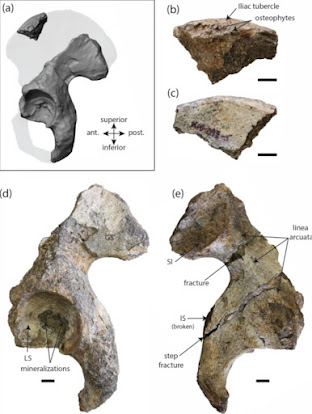Omo I - The Oldest Human Fossil
As per a recent study, one of the oldest known Homo sapiens fossils, Omo Kibish I, may be around 35,000 years older than it was previously thought.
Content:
- HighlightsPrevious age
- How was the date calculated?
- Significance of the new age
- Anatomically modern humans
- Omo-Kibish I remains
- Key points
Highlights
The study used volcanic ash to date the fossils and thus there were 22,000-year margin of error.Omo Kibish I was first unearthed in Ethiopia in 1967.It was difficult to date directly because, it contained only bone and skull fragments. As a result, experts remained divided over their age for long.Previous age.
In 2005, Geologists had analysed the layer of rock just underneath the findings. They came to conclude that, Omo I was at least 195,000 years old. That made the fossil at least that old as well as, oldest ever discovered at the time. However, there was a lot of uncertainty.
How was the date calculated?
Date was calculated by analysing the layers of ash deposited on the fossils. A more precise date means, to analyse the thick layers of ash. Earlier, it was nearly impossible as ash was so fine. However, availability of more refined methods made the team to link ash layer to an eruption of Shala volcano.
Significance of the new age.
New minimum age for Omo I is consistent with most recent theories of human evolution.Study also brings it closer to the age given to oldest Homo sapiens remains, which were discovered in 2017 in Morocco. Remains in Morocco were dated to 300,000 years ago.Omo I is the only fossil, with all the morphological characteristics of modern man.Anatomically modern humans.
Anatomically modern humans.
As of 2017, the oldest known evidence for anatomically modern humans are fossils found at Jebel Irhoud, Morocco. They dated around 360,000 years old. Early modern human (EMH) or anatomically modern human (AMH) terms are used to distinguish Homo sapiens from extinct archaic human species. This distinction is important for times and regions where anatomically modern and archaic humans co-existed. Remains of Homo sapiens found at the Omo-Kibish I archaeological site in Ethiopia is among the oldest known fossil.
Omo-Kibish I remains
Omo remains are a collection of hominin bones. They were discovered between 1967 and 1974 at Omo Kibish sites near Omo River, flowing across Omo National Park in south-western part of Ethiopia. Remains from Kamoya’s Hominid Site (KHS) were dubbed Omo I while from Paul I. Abell’s Hominid Site (PHS) were dubbed as Omo II.
Key points
- As per a recent study published in Nature , one of the oldest known Homo sapiens fossils, Omo Kibish I, may be around 35,000 years older than it was previously thought.
- Omo Kibish I was first unearthed in lower Omo valley of southern Ethiopia. in 1967.
- Earlier attempts to date the Omo I fossils suggested they were 197,000 years old, but the new research shows they must be older than that.
- A major explosive eruption of Shala volcano in the Main Ethiopian Rift that took place 230,000 years ago and represent the earliest evidence of our species, Homo sapiens.
- The study used volcanic ash to date the fossils and thus there were 22,000-year margin of error.
- New minimum age for Omo I is consistent with most recent theories of human evolution.
- Study also brings it closer to the age given to oldest Homo sapiens remains, which were discovered in 2017 in Morocco. Remains in Morocco were dated to 300,000 years ago.
- Omo I is the only fossil, with all the morphological characteristics of modern man.
If you like our work then please follow us and leave a comment below. Thanks for reading.







